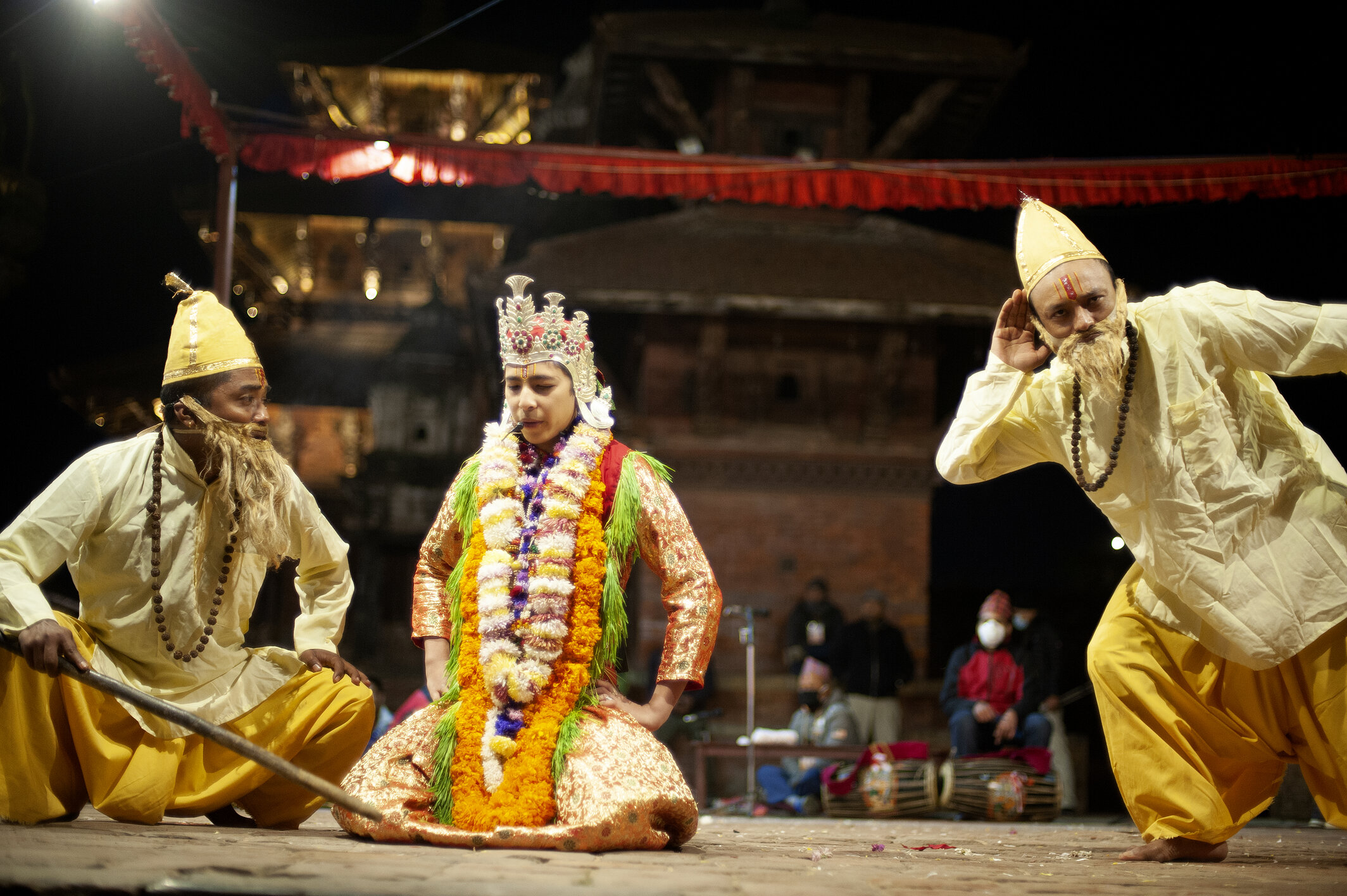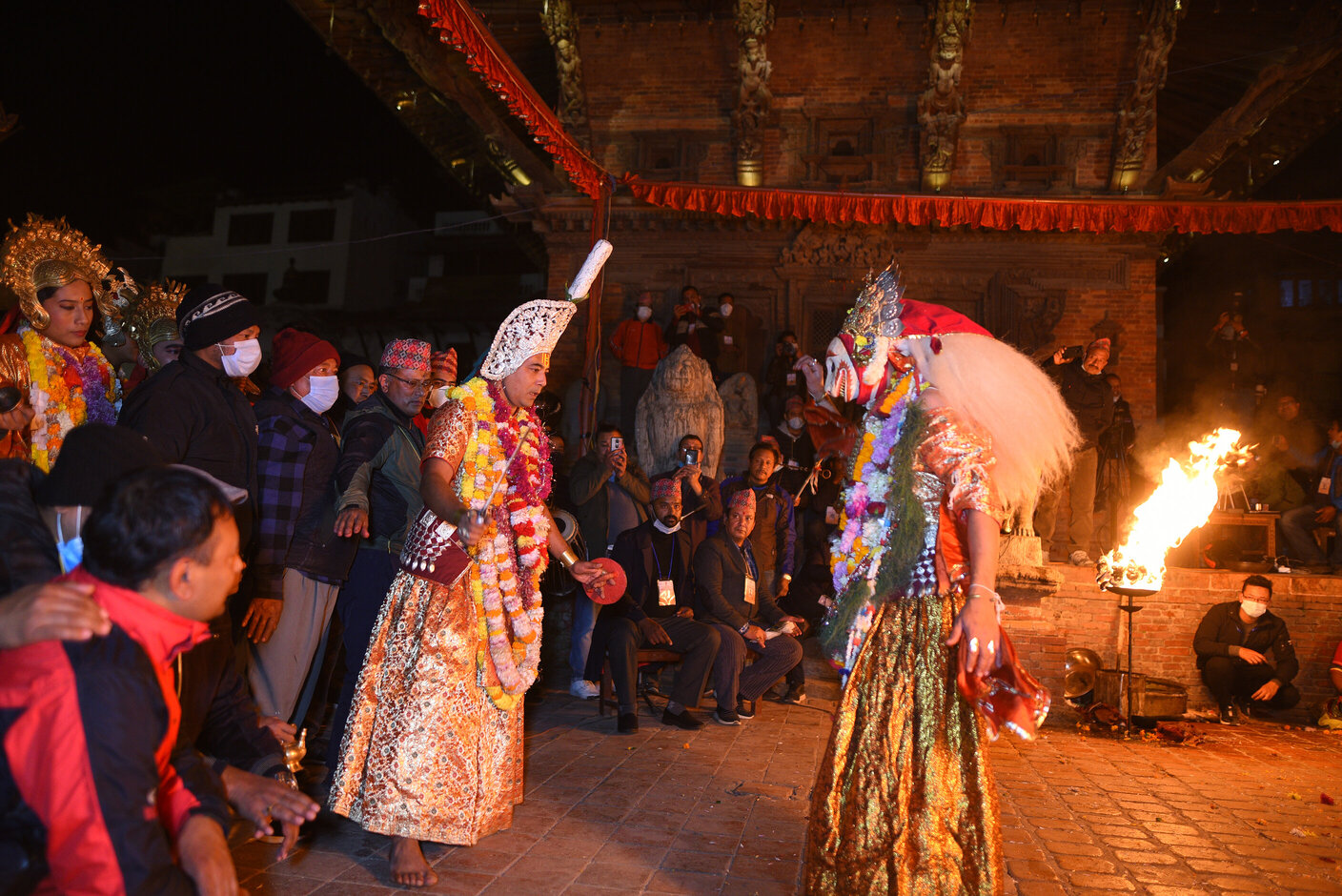Patan’s dance of the deities

Traditionally celebrated with much vigour and enthusiasm, the Kartik Nach performance in Patan Durbar, revived to 12 days after many decades last year, was cut short and subdued this year because of the pandemic.
Organisers did not admit any visitors and sealed off the ancient square during the dance that was limited to two days.


“It took a lot of convincing to get the dancers to perform this year, due to the coronavirus scare, especially as parents of minors were unrelenting,” says Kiran Chitrakar, chairperson of the Kartik Nach Conservation Committee. “The moral stories require crowds to learn from them and the absence of an audience was a demotivating factor.”
Kartik Nach is one of the oldest and consistently staged pyakha in Patan started by King Siddhi Narsingh Malla in the mid 17th century to educate people on their civic duty through dance drama. It takes its name from the lunar month of Kartik and is staged at Kartik Dabu, the elevated platform in Patan Darbar Square.



In the number of days that Kartik Nach spans, there are separate segments of different dance dramas with performers portraying various Hindu deities, told in the format of episodes. Last year it was held for 12 days after being revived by Patan’s current mayor Chiri Babu Maharjan.
The annual tradition with such high historical and cultural importance runs on a shoestring budget and has been struggling even before the pandemic.



Lalitpur Metropolitan City provides Rs200,000 for the annual performance but it is insufficient to support the dance crew, and this time, according to Chitrakar the finances have not come through yet.




